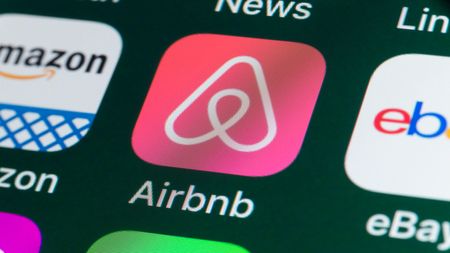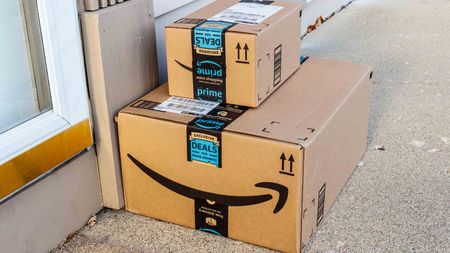Top 100 Best Values in Public Colleges
Our rankings for the best public colleges deliver a first-rate education without breaking the bank.

It could just be the best public college you've never heard of, with prices so low that it's a steal even for out-of-state students.
SUNY Geneseo, a small liberal arts college in western New York, boasts top students, a scenic campus, strong programs in both arts and sciences, and new dorms with -- drumroll, please -- washers and dryers on every floor. It adjoins a historic village with killer quaintness and puts students within 30 miles of Rochester, a major college town.
| Row 0 - Cell 0 | Rankings: 100 Best Public Colleges |
| Row 1 - Cell 0 | Best College Values in Military and Special Academic Programs |
| Row 2 - Cell 0 | Everything You Need to Know About College Aid |
| Row 3 - Cell 0 | MORE COLLEGE AND FAMILY ADVICE |
What's missing at Geneseo? Arguably, only the buzz that impels some parents to pay two or even three times as much for the same features at a private college.

Sign up for Kiplinger’s Free E-Newsletters
Profit and prosper with the best of expert advice on investing, taxes, retirement, personal finance and more - straight to your e-mail.
Profit and prosper with the best of expert advice - straight to your e-mail.
That's good news for parents who want quality and affordability -- and the reason that Geneseo qualifies as one of the top ten best values in public colleges and universities in Kiplinger's annual rankings. This year, Geneseo ranks number one for out-of-state value and number six for in-state value. The University of North Carolina at Chapel Hill, a premier research institution with a mission to meet the full financial need of its students, gets top honors for in-state students for the seventh time in a row.Here's the better news: Most students don't have to go beyond their state borders to find a great public program.
About three-fourths of the states claim at least one top performer among the 100 schools on our honor roll, and many states boast several. High school students who live in the north and despise the snow, and southerners who want to trade their flip-flops for Uggs, also have attractive options. UNC at Asheville, number 40 on our list, carries an annual out-of-state sticker price of $22,234 in total costs. The University of Wisconsin at La Crosse, number 39, gives out-of-state students Cheesehead status for less than $19,000.
Several schools moved up dramatically in our rankings from last year. For instance, Indiana University-Bloomington jumped 21 slots, to number 34, thanks in part to improved test scores for incoming freshmen, more-generous financial aid and a lower average debt at graduation. Ohio State moved up 25 slots, to 37, owing to better ACT scores among incoming freshmen and a lower cost (after need-based aid was factored in) for in-state students. A more competitive admission rate, plus better test scores, moved the University of South Carolina from number 51 up to 35.
PRICES HEAD NORTH
Geneseo president Christopher Dahl firmly believes "there's no reason why the state of New York shouldn't offer its residents the same education that would cost $45,000 to $50,000 at a private school. It's elitist to argue that state residents shouldn't have access to an outstanding education at a reasonable price." Dahl's school makes good on that proposition. In-state students pay $4,350 in tuition and total costs of about $15,000. Out-of-staters pay $10,610 in tuition and $21,226 total.
Lately, however, public colleges have been challenged to deliver that kind of deal in the face of climbing enrollment and competing demands for state funding -- especially for kindergarten through 12th grade. Efforts to boost achievement at younger ages mean that higher ed has had to settle for less money, says Ross Hodel, director of the Center for the Study of Education Policy at Illinois State University. "The mind-set is that higher education is more of an individual benefit than a benefit to society, and higher-education people can take care of themselves."
Increasingly, college administrators are doing just that, by raising private funds or using other revenue to cover some costs. The strategy works well for flagship institutions, such as UNC-Chapel Hill, which just concluded a $2.3-billion fund-raising campaign. But it's tougher for lesser-known schools, such as Geneseo, whose $10-million endowment looks like peanuts in comparison. "We've been commended for doing more with less," says Dahl. "I'd rather do more with more."
| Row 0 - Cell 0 | Rankings: 100 Best Public Colleges |
| Row 1 - Cell 0 | Best Ways to Pay for College |
| Row 2 - Cell 0 | Everything You Need to Know About College Aid |
| Row 3 - Cell 0 | MORE COLLEGE AND FAMILY ADVICE |
Who else covers the shortfall? You, dear parent. Although prices for public schools remain relatively modest compared with private schools, annual increases continue to outstrip inflation. In 2007-08, the average total cost for in-state students ran $13,589, a 5.9% increase over the previous academic year, according to the College Board. For out-of-state students, total charges topped $24,000, up 5.4% over the previous year.
DIVERGING TRENDS
Those costs don't reflect the grants, loans and tax benefits that most families use to pay the bills. Full-time students at four-year public colleges and universities received an average of $3,600 in grants and tax benefits in 2007-08, reports the College Board, reducing in-state tuition and fees from $6,185 to $2,585. The highest average debt at graduation among the schools in our rankings topped out at more than $20,000. That includes private loans, the fastest-growing source of student debt among undergraduates.
Grants and scholarships once went mostly to families whose kids otherwise couldn't afford to go to college. More recently, state legislatures have funded merit scholarships to encourage home-grown students to do well in the lower grades and to attend colleges and universities within the state. Although most financial aid continues to be need-based, according to a 2007 report sponsored by the Western Interstate Commission for Higher Education, "the increase in state merit-aid represents one of the most dramatic shifts in higher education policy since the introduction of the Pell Grant" (federal grants for the neediest students).
The University of Florida, second in our in-state rankings, offers a great deal regardless of financial aid. Its in-state tuition runs only $2,211. (Tuition at UF is slated to go up by as much as 15% a year over the next four years.) Florida's merit-based Bright Futures program, funded by a state lottery, currently covers 75% to 100% of tuition for in-state students who meet the academic criteria -- and most students qualify. "It's very popular," says UF president Bernard Machen. "Constituents and legislators love it."
The University of North Carolina at Chapel Hill represents a divergent trend: a commitment to meet the financial need of all qualified stu-dents and to fill that need with grants, not loans. Its program, called the Car-olina Covenant, reaches out to bright high school students from low-income families. The program allows par-ticipating students to graduate debt-free. Chapel Hill owes the state for the wherewithal to do it. "North Carolina has an unbelievable record over the past six years of increasing funding for need-based financial-aid programs," says Shirley Ort, associate provost and director of scholarships and student aid.
"We've succeeded in conveying that higher education is the key to quality of life in this state," says chancellor James Moeser, who steps down in June. "I couldn't be more proud of the Carolina Covenant." The first group of Covenant students graduates in May. UNC-Chapel Hill also awards merit scholarships, funded by a portion of the revenue it earns from licensed products. "We don't find ourselves in a situation in which we anguish over the share we put into need-based versus merit-based aid," says Ort. "We have dedicated sources that operate in tandem."
The fund-raising campaign added to the pot for both types of aid. "Donors have an emerging interest in helping students from middle-income families who just missed eligibility for financial aid," she says.
As for the students who pay full freight, "we're still an incredible bargain, with incredible quality to go alongside it," says Moeser. Total costs for in-state residents amount to less than $14,000; out-of-staters pay less than $30,000. For their money, students enjoy world-class research facilities, a historic campus that recently underwent a $515-million renovation and the collected wisdom of distinguished faculty members, including Oliver Smithies, recent winner of the Nobel Prize in Physiology or Medicine. Says Moeser, "Great faculty allows us to attract great students."
IVY-league ALTERNATIVE
William Caren, a longtime administrator at SUNY Geneseo, laughs at the memory of having to tell groundskeepers not to pull the ivy off the brick buildings. "I said, ÔDon't do that!' You've got to have curb appeal." Over the past decade, Geneseo has worked hard to cultivate its image as an elite, ivy-covered liberal arts college in the New England style. The carefully landscaped campus exploits its glorious setting on a slope of the Genesee River Valley. Buildings represent a mix of old and new, including gabled brick halls, Tudor-style townhouses for upperclassmen and a state-of-the-art science center. Says Caren, "People are surprised at how nice it is."
Geneseo competes with selective private colleges in the state, such as Hamilton and Skidmore. "People here are really smart -- it pushes you," says Maureen Gillard, a fourth-year student. Most incoming freshmen rank in the top 10% of their high school class; 87% scored over 600 on their math SATs. With applications up 18% in 2007, Geneseo can afford to be picky. It accepts about one-third of applicants.
Some of the school's stiffest competition comes from within the SUNY system. With 11,500 undergraduates, Binghamton University (number eight in our in-state rankings and number two for out-of-staters) is twice the size of Geneseo. It offers 26 doctoral programs and attracts a more diverse population, including almost 1,700 international students.
Still, "if a student is looking for a place focused on undergraduates, we fill that niche," says Dahl. Geneseo's small size allows students to work closely with faculty, and they don't have to share attention and resources with grad students. "I've been doing research since sophomore year," says Mehr Qureshi, a senior who is applying to medical school. "I got to know my professors. Being at Geneseo has helped make me a better candidate."
To secure its place as a top-tier institution, Geneseo hopes to attract students from farther afield. Out-of-state residents currently represent only about 3.5% of the student population. "We're a fairly well-kept secret beyond the borders of New York," says Dahl. The school sets no cap on out-of-state admissions and has lately stepped up its recruiting in neighboring states, but, says Caren, out-of-staters haven't caught on yet.
Gillard, who's from Colchester, Vt., is one student who did the math. At first, she balked at visiting Geneseo after a long day of college shopping ("I didn't even want to get out of the car"). But the tour and the setting moved Geneseo up on her list, and price put it over the top. Geneseo's out-of-state total cost matches in-state tuition at the University of Vermont and is less than half that of St. Lawrence University, Gillard's other top choice. She abandoned her plan to attend St. Lawrence and went with Geneseo because "the cost was so much lower."
Rob Brooks, a sophomore from East Lyme, Conn., represents Geneseo's avowed future: an out-of-state student who learned about Geneseo from a private college counselor and whose high school has since put Geneseo on its radar screen. Like Gillard, Brooks knew that tuition would play a role in his college choice. "My dad said, 'I'm not paying for you to go to a $40,000-a-year school,'" he says. The $4,000 scholarship that Ithaca College offered him didn't bring Ithaca's costs down nearly enough to match Geneseo's sticker price, and Geneseo's new science building cemented Brooks's choice.
That combination of cost and quality sums up Geneseo's appeal to both residents and out-of-staters. Ivy or no ivy, "Our framework is to back up our reputation and rankings with real excellence," says Dahl. "We're very conscious of trying to be a great public liberal arts college."
Coletta Hagan, Elizabeth Ody and Stacy Rapacon helped compile the data for this special report.
SEE ALS0: Best College Values in Military and Special Academic Programs
Rankings: 100 Best Public Colleges | COLLEGE AND FAMILY CENTER
Get Kiplinger Today newsletter — free
Profit and prosper with the best of Kiplinger's advice on investing, taxes, retirement, personal finance and much more. Delivered daily. Enter your email in the box and click Sign Me Up.

-
 Stock Market Today: Dow Rises 854 Points From Its Intraday Low
Stock Market Today: Dow Rises 854 Points From Its Intraday LowIf there's one thing markets hate, it's uncertainty. But uncertainty is all they're getting these days.
By David Dittman Published
-
 Are You a Retirement Millionaire Too Scared To Spend?
Are You a Retirement Millionaire Too Scared To Spend?If you are too scared to spend money in retirement, you may be saddled with regret. Here are three ways to safely enjoy your sizable retirement nest egg.
By Donna Fuscaldo Published
-
 Roth IRA Contribution Limits for 2025
Roth IRA Contribution Limits for 2025Roth IRAs Roth IRA contribution limits have gone up. Here's what you need to know.
By Jackie Stewart Last updated
-
 Four Tips for Renting Out Your Home on Airbnb
Four Tips for Renting Out Your Home on Airbnbreal estate Here's what you should know before listing your home on Airbnb.
By Miriam Cross Published
-
 Five Ways to a Cheap Last-Minute Vacation
Five Ways to a Cheap Last-Minute VacationTravel It is possible to pull off a cheap last-minute vacation. Here are some tips to make it happen.
By Vaishali Varu Last updated
-
 How to Figure Out How Much Life Insurance You Need
How to Figure Out How Much Life Insurance You Needinsurance Instead of relying on rules of thumb, you’re better off taking a systematic approach to figuring your life insurance needs.
By Kimberly Lankford Last updated
-
 Amazon Big Deal Days Is Coming! We’ve Got All the Details
Amazon Big Deal Days Is Coming! We’ve Got All the DetailsAmazon Prime To kick off the holiday season with a bang, Amazon Big Deal Days runs Tuesday, October 8 and Wednesday, October 9.
By Bob Niedt Last updated
-
 How to Shop for Life Insurance in 3 Easy Steps
How to Shop for Life Insurance in 3 Easy Stepsinsurance Shopping for life insurance? You may be able to estimate how much you need online, but that's just the start of your search.
By Kaitlin Pitsker Last updated
-
 Five Ways to Shop for a Low Mortgage Rate
Five Ways to Shop for a Low Mortgage RateBecoming a Homeowner Mortgage rates are high this year, but you can still find an affordable loan with these tips.
By Daniel Bortz Last updated
-
 Retirees, It's Not Too Late to Buy Life Insurance
Retirees, It's Not Too Late to Buy Life Insurancelife insurance Improvements in underwriting have made it easier to qualify for life insurance, which can be a useful estate-planning tool.
By David Rodeck Published